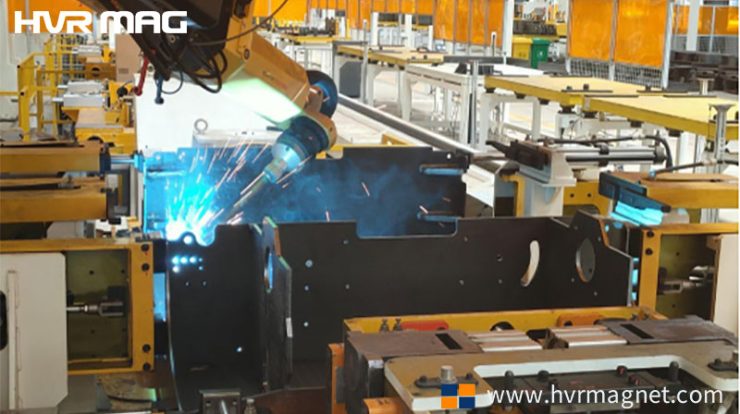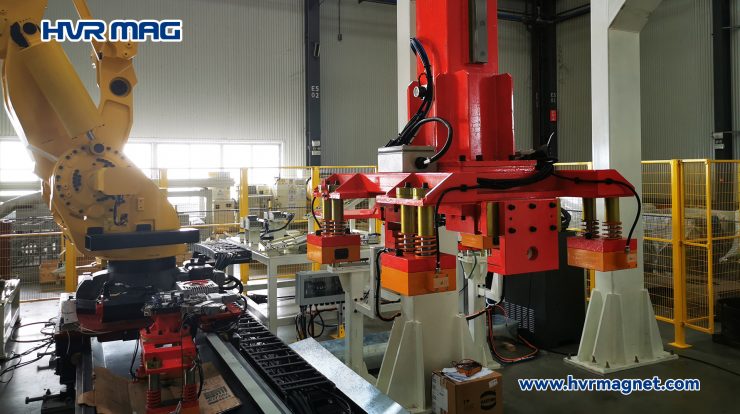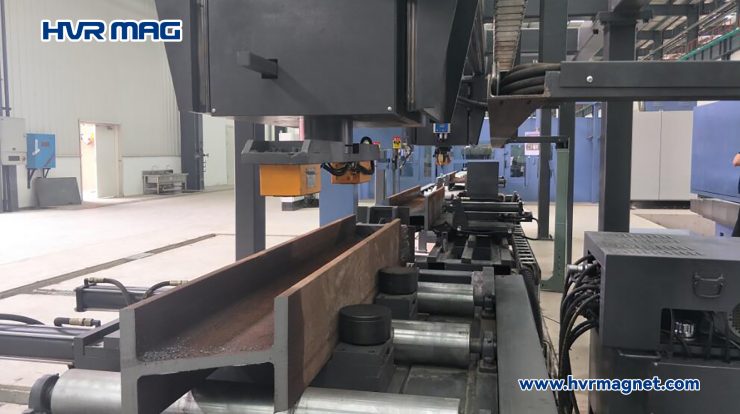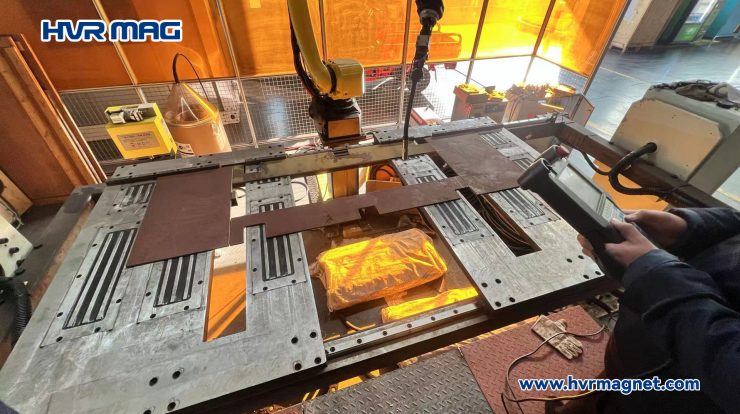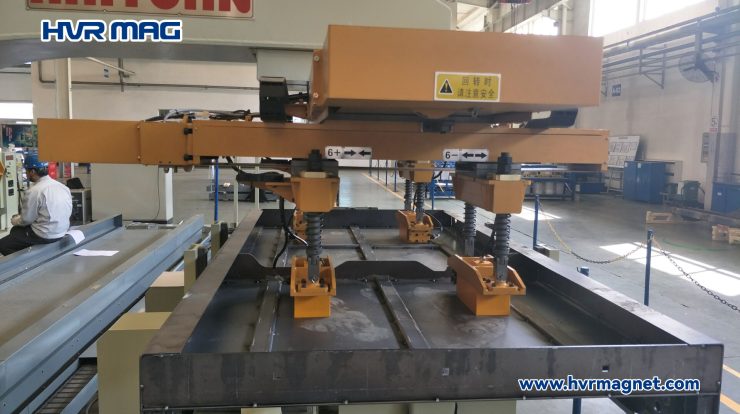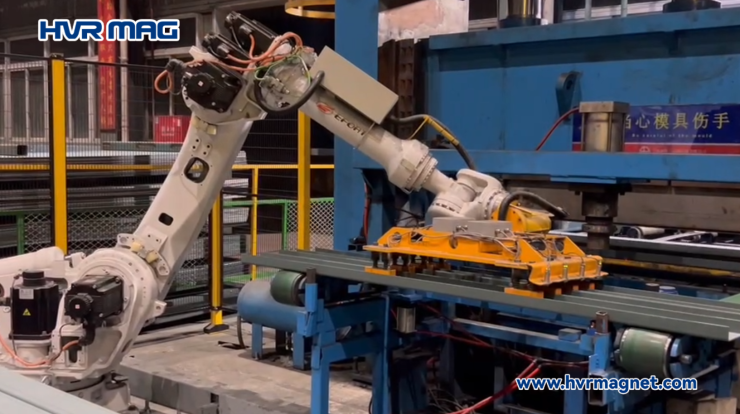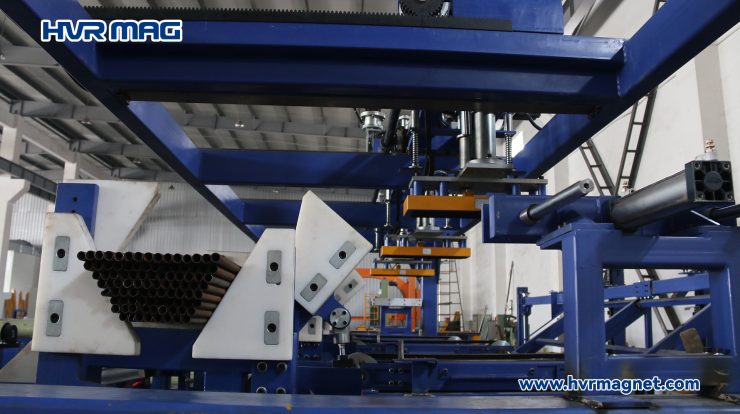
What are electro permanent magnetic grippers
Electro permanent magnetic grippers, also known as EPM grippers, are advanced robotic tooling devices that utilize a combination of electricity and permanent magnets to securely hold and manipulate ferromagnetic objects.
How do they work?
The operation of electro permanent magnetic grippers involves two key stages: magnetization and demagnetization. During the magnetization phase, an electric current is applied to the electro permanent magnets, generating a strong magnetic field that attracts and firmly grips ferromagnetic objects. Once the object is securely held, the power supply can be disconnected, and the gripper continues to maintain its holding force without the need for constant power consumption.
The demagnetization stage occurs when the electro permanent magnetic gripper needs to release the object. By utilizing the unique properties of the electro permanent magnets, a reverse electric current is applied to neutralize the magnetic field, causing the gripper to release the object effortlessly.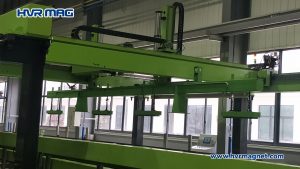
Advantages of electro permanent magnetic grippers
Energy Efficiency: Electro permanent magnetic grippers consume power only during the magnetization and demagnetization phases, reducing overall power consumption compared to continuously powered magnetic grippers. This energy-saving feature contributes to cost reduction and sustainability.
Compact and Lightweight Design: These grippers are designed to be compact and lightweight, making them easy to integrate with robotic systems and end effector. Their minimal footprint allows for efficient utilization of workspace and enables seamless integration into various automated applications.
Versatility: They can handle a wide range of ferromagnetic objects, including metal sheets, plates, bins, or even entire components. This versatility makes them suitable for diverse industries, such as automotive, electronics, logistics, and warehouse automation.
Improved Safety: They provide reliable holding force without the need for a continuous power supply. In the event of a power failure or disruption, the gripper remains locked in position, preventing unexpected drops or accidents. This feature enhances worker safety and minimizes production downtime.
Damage-free handling: Unlike mechanical gripper or clamps that can leave marks or indentations on the surface of an object, electro permanent magnetic grippers utilize the magnetic force to hold the object. The magnetic force is evenly distributed across the object being held, minimizing the risk of surface scratches, dents, or other forms of damage.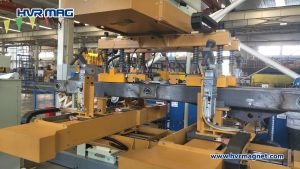
Disadvantages of electro permanent magnetic grippers
Limited to Ferromagnetic Objects: Electro permanent magnetic grippers can only handle objects made of ferromagnetic materials, such as iron or steel. Non-ferromagnetic materials, including aluminum, copper, or plastic, are not compatible with them. This limitation restricts their application to specific materials and can require alternative handling methods for non-ferromagnetic objects.
Complexity and Cost: These grippers involve complex technology and construction, which can make them relatively expensive compared to other gripping solutions.
Conclusion
While the disadvantages of electro permanent magnetic grippers should be acknowledged, they are outweighed by the benefits they offer in many industrial applications. It’s important to carefully evaluate the specific requirements, materials, and operational conditions of a given application before considering the use of electro permanent magnetic grippers.
For more advice, please contact professional electro permanent magnet supplier HVR MAG at export@hvrmagnet.com

